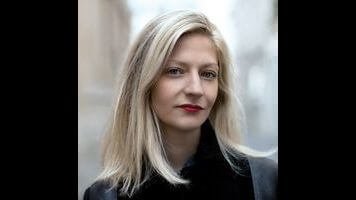Flâneuse is a book about a woman walking through cities. But it is also about reading and writing, seeing and being seen, youth and age, architecture, urban planning, rebellion, protest, romance, heartbreak, longing, and belonging. In the introduction, “Flâneuse-ing,” author Lauren Elkin’s explains her “imaginary definition” of this term:
Flâneuse [flanne-euhze], noun, from the French. Feminine form of flâneur [flanne-euhr], an idler, a dawdling observer, usually found in cities.
Elkin writes that the idea of the flâneur was born in Paris, in the first half of the 19th century. But the term—and the act—applied to men only. The female flâneuse would have to wait until the late 19th century, when women of all classes braved public spaces unaccompanied by a man. With the arrival of the “new woman” in the 1890s, the flâneuse could be seen regularly on city streets walking between home, shops, cafés, and offices.
Elkin, living firmly in the 21st century, writes that for her, walking “is like mapping with your feet.” She herself walks because it can help her solve a problem (“solvitur ambulando, as they say”), “because it confers—or restores—a feeling of placeness,” and because walking is “like reading.” As we keep reading though her words, we see these different kinds of walks in action.
Flâneuse is loosely organized by city—the Paris, New York, Tokyo, Venice, and London of its subtitle—but it is not entirely linear. A section might begin with a description of the city in question but then veer into history or architecture or the philosophy of revolution. You become a flâneuse (or flâneur) of the book—wandering where it takes you through different moods and modes.
In New York, we learn about Elkin’s childhood on Long Island and her relationship to her home city. But Elkin also broadens her scope by gathering insights from other writers on the nature of cities. Rebecca Solnit compares cities to suburbs: The “history of suburbia,” Solnit writes, “is the history of fragmentation.” In Paris we walk the streets alongside the writer Jean Rhys, who moved there just after the First World War. Elkin provides a sense of her work as well as her feelings about her new home by quoting a letter Rhys wrote:
The “Paris” all these people write about, Henry Miller, even Hemingway etc. was not “Paris” at all—it was “America in Paris” or “England in Paris.” The real Paris had nothing to do with that lot…
Rhys’ Paris is one of women—including herself—trying to find themselves as they live in the freedom of the city and “outside the machine,” as she put it in her short story of the same name. In a later Paris section, Elkin writes about Paris’ centuries-long tradition of rebellion and protest marches, and how she herself participated in their “manifs” after September 11th. Whether through the lives of the women who live there, the writers who work there, or the rebels of the 18th century and beyond, Paris feels poised to “explode into rebellion, given the right circumstances.”
In London, Elkin turns to a different kind of rebellion. She looks at the life and work of Virginia Woolf, who turned away from the traditions of Victorian England and embarked on a new life in a new neighborhood: Bloomsbury. Here Woolf created a fictional flâneuse in Mrs. Dalloway, who reflects on her past while walking out to buy flowers for a party. But Woolf also writes about her own adventures walking London’s streets, in search not of flowers but a pencil. Woolf calls it “street haunting.” Elkin writes of this essay:
Sailing out into a winter evening, surrounded by the “champagne brightness of the air and the sociability of the streets,” the observer feels blessed with the “irresponsibility which darkness and lamplight bestow.” In the street we are no longer “quite ourselves”—instead we become “functions of the urban landscape.” Whereas once we were objects of the gaze, as street haunters we become observing entities, de-sexed, un-gendered. We cloak ourselves in anonymity, and become as incomprehensible to the city as it often is to us.
This anonymity confers great freedom on the flâneuse, whether she be Woolf or Rhys; the artist Sophie Calle stalking her subjects through the streets of Venice; filmmaker Agnès Varda in Paris; the fictional Charlotte in Lost In Translation’s Tokyo; or Elkin herself in all of these cities. And from this freedom of being a flâneuse comes thought, writing, and art.
Flâneuse is a deeply pleasurable book, whether you are a man or a woman, whether you know these cities (or books, or writers, or artists) or not. You will see these streets anew, just as if you were a flâneur in a New York neighborhood or along a canal in Venice. There is always something more to explore, just around the next corner—or on the next page.
Purchase Flâneuse
here, which helps support The A.V. Club.


 Keep scrolling for more great stories from A.V. Club.
Keep scrolling for more great stories from A.V. Club.